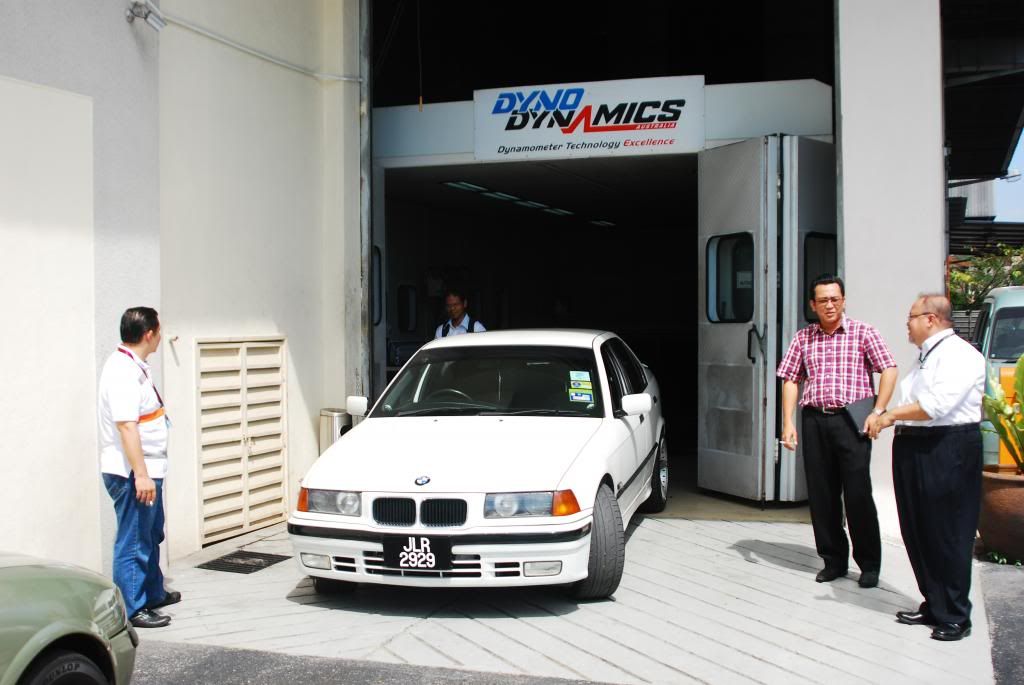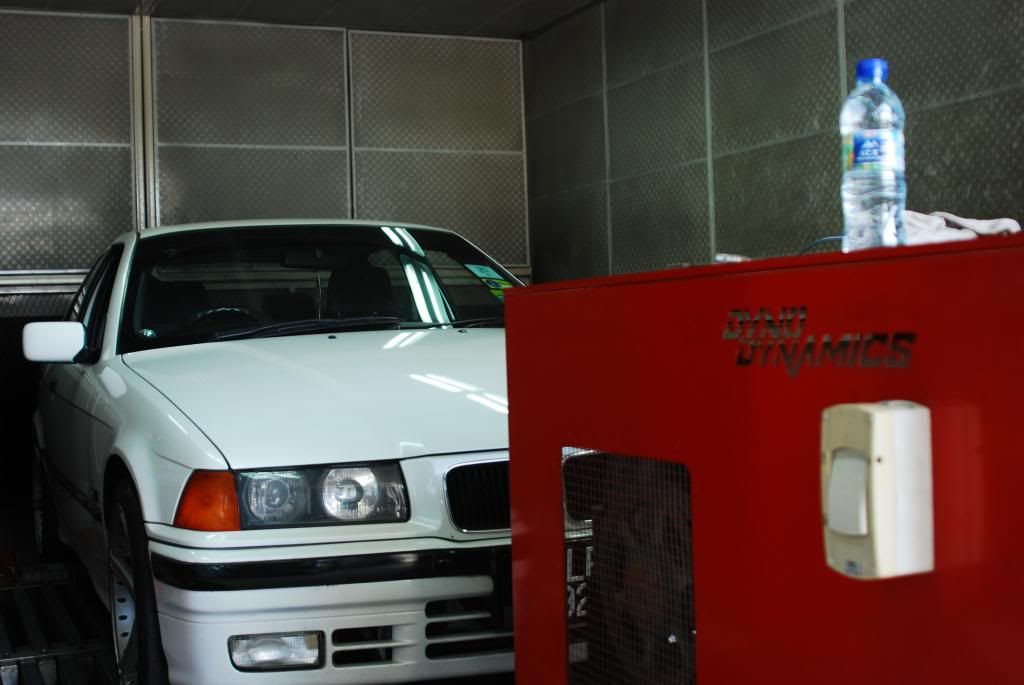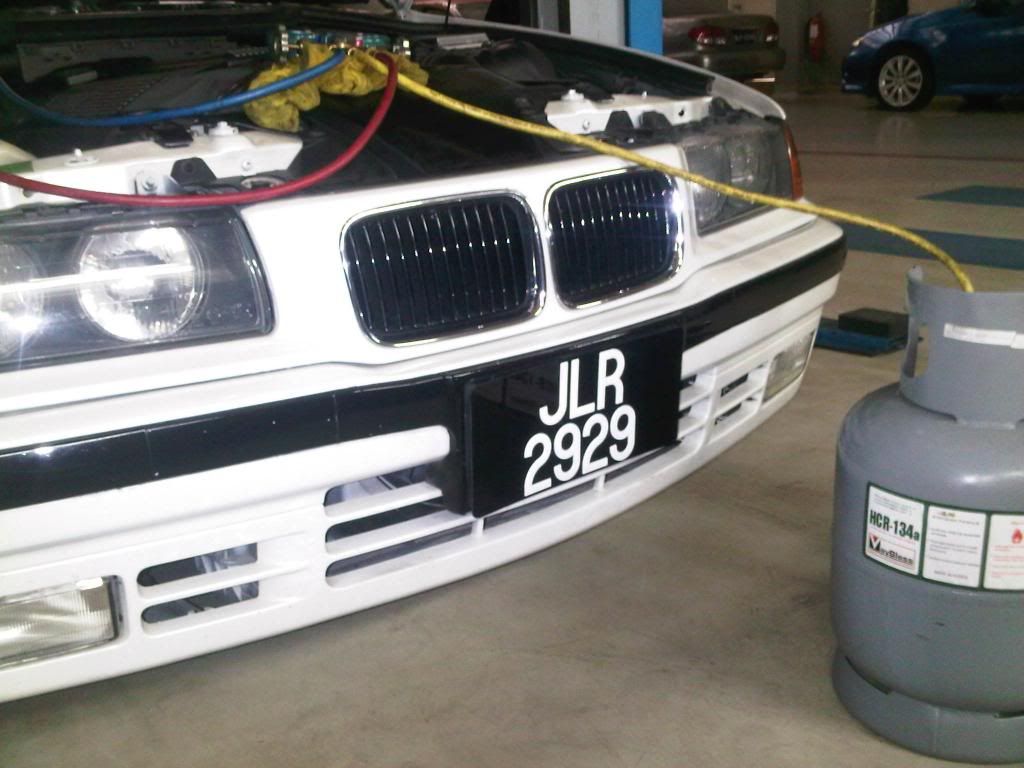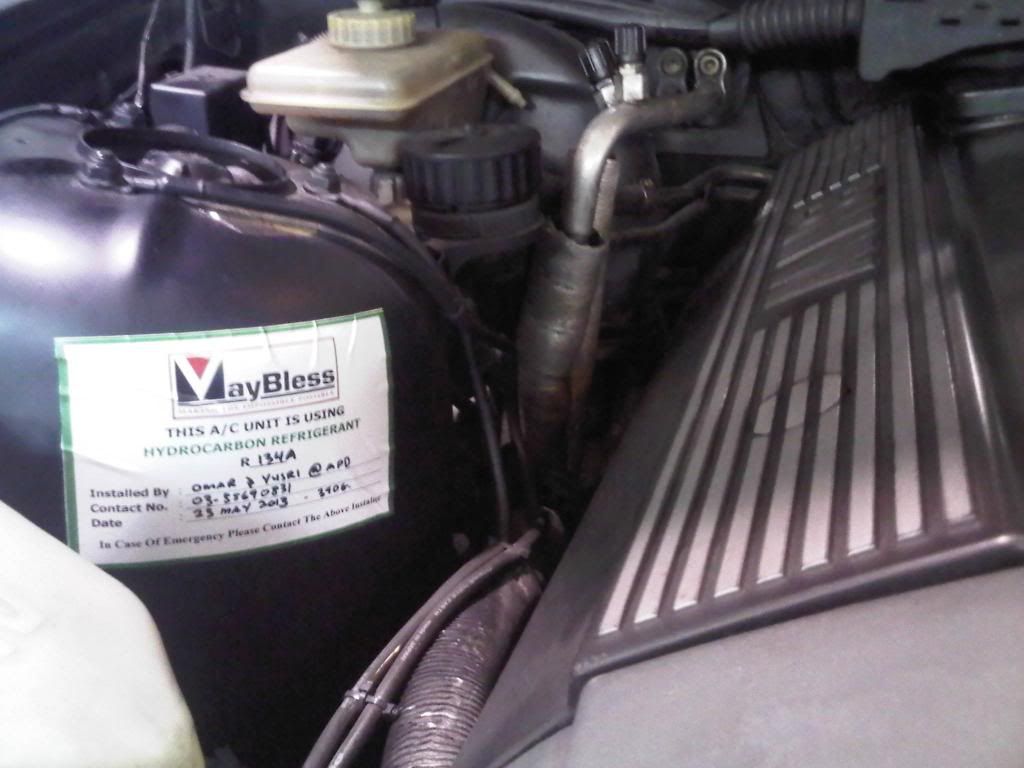HaqimRashid
Club Guest
Hi Guys,Wanted to share my experience last week on converting my air-conditioning refrigerant from HCFC R134a based to an eco-friendly Hydro Carbon based HCR 134a.Did the conversion at APD (Automotive Performance Developement) in Glenmarie. Started off with DYNO test on my 325i, m50tub25, gm4 gb. No retrofitting. Plug and Play style.Results: 145.2 hp on wheel - Aircond off (Average of 15 runs)131.9 hp on wheel - Aircond on (Average of 15 runs)Afterwards, proceed to check and making sure all AC system are performing. Lucky enough, all good. So, plugged in the recovery machine and recovered all the harmful to environment HCFC gas from the car.. Results: 820g HCFC recovered. Optimum as recommended on BMW AC system 1000g +/- 25g.Scaled up the gas canister, and filled up 384g of HCR 134a. Ratio of HCR to HCFC is 1g HCR : 2.6g HCFC. Upon completing, did runs on the dyno again to see performance.Results:133.9 hp on wheels - Aircond on (Average of 15 runs) - Highest single run was 138.6 hp on wheels with Aircond on.Overall on average 2hp increment.Gas performs great. notice slight improvement in fuel savings in town driving (same route daily). AC much cooler. Air to fuel ratio also improve from the dyno test. Much leaner now than rich.. The HC gas cools faster than HCFC so compressor cuts-off faster than before and the loading much lesser for compressor. Now i'm monitoring the fuel savings to see the actual performance.I was told that the new Lambos, Ferraris, Porsches and most new conti models in Europe are now running on this gas..Total cost i kena: FOC. On the house. Cause doing some consultancy for them. 








